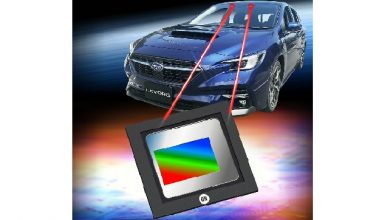Advanced Driver Assistance System (ADAS) Sensors market size to surpass value of USD 25,000 million by 2026: Facts & Factors

Facts and Factors have published a new research report titled “Advanced Driver Assistance System (ADAS) Sensors Market By Product Type (Temperature Sensor, Laser Sensor, Radar Sensor, Ultrasonic Sensor, LiDAR Sensor, Pressure Sensor, Infrared Sensor, and Others), By Vehicle Type (Passenger Cars, Commercial Vehicles, and Heavy Commercial Vehicles), By Sales Channel (Original Equipment Manufacturer (OEM), Independent Aftermarket (IAM), and Original Equipment Spares (OES)): Global & Regional Industry Perspective, Comprehensive Analysis, and Forecasts, 2021 – 2026”.
“According to the recent research report, the demand of global Advanced Driver Assistance System (ADAS) Sensors Market size & share expected to reach to USD 25,000 Million by 2026 from USD 12,500 Million in 2020, at a compound annual growth rate (CAGR) of 11.7% during the forecast period 2021 to 2026”
Global Advanced Driver Assistance System (ADAS) Sensors Market: Overview
The Advanced Driver Assistance System (ADAS) architecture is built around sensors. ADAS (Advanced Driver Assistance Systems) are in-vehicle systems that monitor, warn, and manage the vehicle with partial and full driver control. When the person driving the car is unable to completely concentrate on driving and needs assistance in vehicle control, it assists the driver in driving and other tasks such as parking the vehicle. Many sensor manufacturers are concentrating on developing high-precision sensors because ADAS sensors are such an important part of ADAS decision-making for vehicle control.
As a result of the widespread use of cameras and radars, the ADAS sensor industry will benefit from a better understanding of vehicle safety scores and lower product costs. Major automakers are implementing ADAS technology in order to improve safety ratings and attract more customers. As a result of the increasing adoption of ADAS sensor features, demand for components such as radar sensors, LiDAR, and ultrasonic sensors is expected to rise during the forecast era. Simple infrastructures with well-organized highways, GPS availability, and lane markings are needed for ADAS sensors to work properly. Lack of infrastructure outside of urban areas, cost considerations, and insufficient driving training or discipline are all impeding the industry’s development in developing countries. Financial crises triggered by the current COVID-19 pandemic will also stifle the expansion of new transportation networks.
Industry Major Market Players
- Robert Bosch GmbH
- Bosch Group
- NXP Semiconductors N.V.
- Denso Corporation
- Velodyne Lidar Inc.
- Delphi Technologies
- Valeo SA
- Hyundai Mobis
- Texas Instruments Inc
- Panasonic Corporation
- TE Connectivity Ltd.
- Continental AG.
- Quanergy Systems Inc.
- Autoliv Inc.
- Pixelplus Co. Ltd.
- HELLA GmbH & Co. KGaA
- ON Semiconductor Corp.
- Littelfuse Inc.
- OmniVision Technologies Inc.
- LeddarTech Inc.
Key questions answered in this report:
- What is the projected market size & growth rate of the Advanced Driver Assistance System (ADAS) Sensors Market?
- What are the key driving factors for the growth of the Advanced Driver Assistance System (ADAS) Sensors Market?
- What are the top companies operative in the Advanced Driver Assistance System (ADAS) Sensors Market?
- What segments are covered in the Advanced Driver Assistance System (ADAS) Sensors Market?
- How can I get free sample report/company profiles of the Advanced Driver Assistance System (ADAS) Sensors Market?
Market Growth Factors, Dynamics & Drivers
The introduction of self-driving cars is expected to transform commuting. ADAS advances have significantly reduced the complexity of driving with features such as lane tracking, emergency braking, and stability sensors, among others. Autonomous vehicles use progressive technologies and equipment such as ultrasonic sensors, radar, LiDAR, and high-definition cameras to collect data. This information is analyzed by an onboard smart autonomous driving system in order to safely steer the vehicle. Major automakers such as Volkswagen, General Motors, Tesla, and Ford plan to introduce fully autonomous vehicles in the coming years. ProPILOT will be available in 20 Nissan vehicles by 2022, according to Nissan’s announcement in March 2018. If the focus on autonomous driving systems increases, OEMs will be able to incorporate more cruise control technologies and advanced protection measures for semi-autonomous vehicles. The majority of ADAS safety features are comprised of sensors such as radar sensors, ultrasonic sensors, LiDAR, microphones, infrared, and multiple actuators. Fields are tracked in both directions by these sensors and actuators, ensuring the safety of the car, driver, passengers, and pedestrians. The function of the system is affected by a number of factors, including traffic and temperature. The safety of occupants may be jeopardized in the absence of precise fail-safe procedures.
The proper operation between ADAS necessitates a delicate balance of automation and manual override. In addition to meeting the functional requirements, ADAS sensors must be shielded from malicious hackers. If an attacker gains access to the unit, he or she may be able to take control of the vehicle. Bluetooth, Wi-Fi, and even GPS have been used to gain vehicle connectivity in many studies. As a result of these attacks, device manufacturers and OEMs face a significant security risk.
Advanced Driver Assistance System (ADAS) Sensors Market: Regional Analysis
North America and Europe are projected to account for the largest share of the global ADAS sensor market due to the presence of leading manufacturers in these regions. Furthermore, growing knowledge about driving safety, as well as initiatives and regulations developed by road safety authorities, is expected to propel market growth in these regions during the forecast period. The explosive growth of the automotive industry in major economies like China, India, Japan, and Australia in the area is expected to drive demand in the Asia Pacific region.
This report segments the Advanced Driver Assistance System (ADAS) Sensor market as follows:
Global Advanced Driver Assistance System (ADAS) Sensor Market: By Product Type Segmentation Analysis:
- Temperature Sensor
- Laser Sensor
- Radar Sensor
- Ultrasonic Sensor
- LiDAR Sensor
- Pressure Sensor
- Infrared Sensor
- Others
Global Advanced Driver Assistance System (ADAS) Sensor Market: By Vehicle Type Segmentation Analysis
- Passenger Cars
- Commercial Vehicles
- Heavy Commercial Vehicles
- Others
Global Advanced Driver Assistance System (ADAS) Sensor Market: By Sales Channel Segmentation Analysis
- Original Equipment Manufacturer (OEM)
- Independent Aftermarket (IAM)
- Original Equipment Spares (OES))
Key Highlights of this Report:
- Statistically Validated Analysis of Historical, Current, and Projected Industry Trends with Authenticated Market Sizes Information and Data in terms of Value and Volume, wherever applicable
- Detailed List of Key Buyers and End-Users (Consumers) analyzed as per Regions and Applications
- Overview of Key Marketing Strategies and Key Sales Channels Adopted in the Market
- Market Attractiveness Analysis and Key Investment Opportunity Analysis in the Market going forward
- Direct and Indirect Factors that Impacted the Industry as well Projected Rationales expected to affect the industry going forward
- Historical and Projected Company / Vendor / OEM / Supplier Market Shares, Competitive Landscape, and Player Positioning Data





